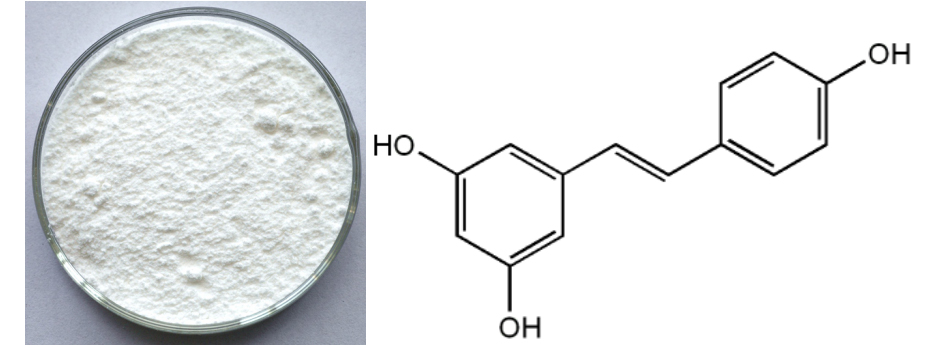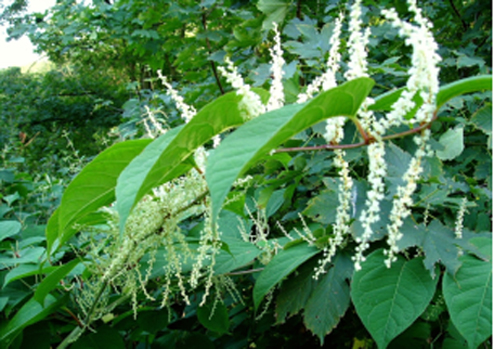Manufacturing Companies for Resveratrol Wholesale to Qatar
Manufacturing Companies for Resveratrol Wholesale to Qatar Detail:
[Latin Name] Polygonum Cuspidatum Sieb. et Zucc
[Plant Source] China
[Specifications] Resveratrol 50%, 95%, 98% by HPLC
[Appearance]Brown or white fine powder
[Plant Part Used] Rhizome&Root
[Particle size] 80 Mesh
[Loss on drying] ≤5.0%
[Heavy Metal] ≤10PPM
[Storage] Store in cool & dry area, keep away from the direct light and heat.
[Package] Packed in paper-drums and two plastic-bags inside.
[General feature]
1.100% natural source. Our resveratrol is 100% extracted from natural herb, very safe and more bioactive, which is rich with both CIS-resveratrol and trans-resveratrol.
2.Our resveratrol almost have no unpleasant taste compare to other resveratrols and it can be easier to take by oral.
3.We offer resveratrol at a very competitive price with superb quality.
4.We have a very large output and could manufacturer as customer particular requirement.
[Function]
Resveratrol is an active component extracted from Huzhang (Polygonum cuspidatum) in China.
It is an antioxidant phenol and a potent vasodilator that inhibits serum triglyceride synthesis, lipid peroxidation, and platelet aggregation.
It is extensively used for treatment of blood vessel disease such as atherosclerosis and hyperlipidemia. In addition, it has anti-virus and anti inflammatory activity, can treat acute microbial infections and viral hepatitis.
Product detail pictures:

Related Product Guide:
Our products are broadly identified and trustworthy by people and may meet continually modifying financial and social requires of Manufacturing Companies for Resveratrol Wholesale to Qatar , The product will supply to all over the world, such as: Karachi, Paraguay, Salt Lake City, So that you can utilize the resource from the expanding info in international trade, we welcome shoppers from everywhere on-line and offline. In spite of the good quality solutions we provide, effective and satisfying consultation service is supplied by our professional after-sale service team. Product lists and detailed parameters and any other info weil be sent to you timely for your inquiries. So you should make contact with us by sending us emails or call us if you have any questions about our corporation. ou may also get our address info from our web page and come to our company to get a field survey of our merchandise. We've been confident that we have been going to share mutual achievement and create strong co-operation relations with our companions in this marketplace. We're searching forward for your inquiries.
Oatmeal cookies are really good, so today we made a healthy version with yogurt, brown sugar, eggs and very little flour. Have some delicious treats with me in Max’s Messy Kitchen.
Johann Sebastian Bach (1685-1750)
Cantata BWV 12: Weinen, Klagen, Sorgen, Zagen (22 April 1714)
1. Sinfonia in F major
2. Weinen, Klagen, Sorgen, Zagen (Chorus) 02:18
3. Wir müssen durch viel Trübsal (Recitative: A) 08:40
4. Kreuz und Kronen sind verbunden (Aria: A) 09:24
5. Ich folge Christo nach (Aria: B) 15:57
6. Sei getreu, alle Pein (Aria: T) 18:05
7. Was Gott tut, das ist wohlgetan (Chorale) 22:19
Soloists:
Soprano: Susanne Rydén
Countertenor: Steven Rickards
Tenor: John Elwes
Bass: Michael Schapper
Performed by Joshua Rifkin and The Bach Ensemble. Recorded by Dorian in 1995-96.
“Weinen, Klagen, Sorgen, Zagen (Weeping, Lamenting, Worrying, Fearing) (BWV 12) was written for the Sunday Jubilate, the third Sunday after Easter, which was the 22nd April 1714. This was the second cantata Bach wrote after his appointment as music director to the Court of Weimar. The libretto is without freely written recitative and this fact, together with the three arias which follow closely on one another, shows it to be an unmistakable transitional form of the Weimar poet Salomon Franck. Despite missing proof of the fact we can regard him as the undoubted author of the libretto. For the content of his work Franck turned to the Sunday Gospel according to St. John (Chap. 16:16-23), and its basic thoughts ‘Sadness (about Jesus’ Farewell)–Joy (at seeing Jesus again)’ became the governing theme of the cantata.
In his composition Bach interprets these basic thoughts of the libretto with those means which the teaching of the ‘musica poetica’ of his time provided. ‘Sadness’ is portrayed by chromaticism, for example the falling bass line of the opening chorus, but ‘Joy’ on the other hand is illustrated by rising diatonic harmony like that which is to be found in the recitative, in the second aria and, too, in the final chorale. There are further musical techniques, such as canonic passages and chorale extracts in instrumental form, which serve to clarify and give point to the libretto.
The solemn and separate instrumental introduction–in later cantatas this sort of introduction becomes an integral part of the opening chorus–is followed by a sedately constructed choral section whose main part is a chaconne built up over a chromatically falling bass-continuo. We know this chaconne from its later re-shaping into the ‘Crucifixus’ of the B minor Mass. The middle section has a faster tempo and its construction and harmony are less complicated.
The biblical text in the third movement is presented as recitative accompanied by strings, the top instrumental voice of which (violin 1) plays a rising scale of held notes. The full meaning of this is made clear to us when the alto sings the words ‘in das Reich Gottes eingehen’ (‘to enter the kingdom of God’) also to a rising scale.
The change from sadness to joy is reflected in the fluctuating character of the three arias. In the fifth movement we meet again the rising scalic figure, this time with numerous canonic parts as symbol of the image of Christ, and in the sixth movement in place of an obligato instrument the trumpet plays the chorale melody (without text) ‘Jesu, meine Freude’ (‘Jesus, my Joy’) which is to say: Jesus turns sadness into joy.
The final chorale, which is as usual simply constructed, is extended into solemn, five-part harmony by an independent, high instrumental voice.” – Alfred Dürr
The sales person is professional and responsible, warm and polite, we had a pleasant conversation and no language barriers on communication.







